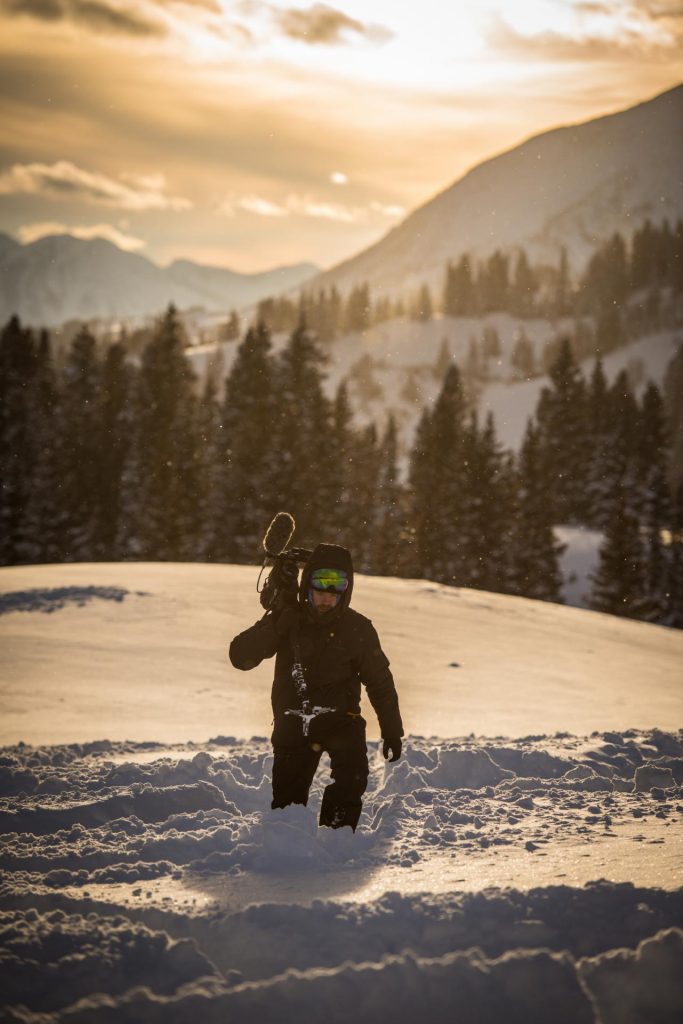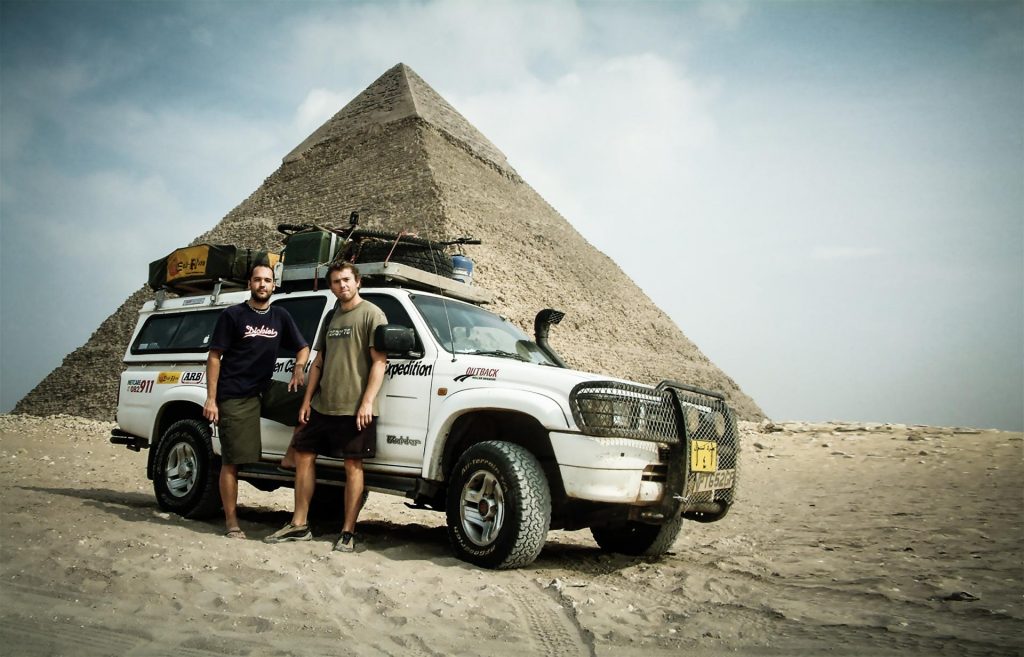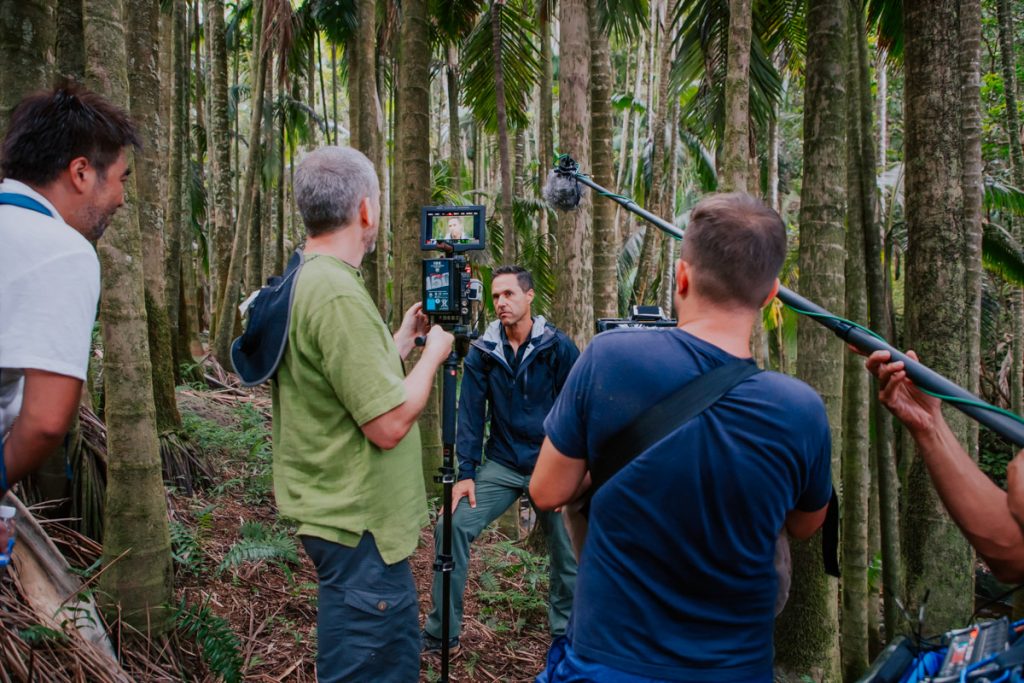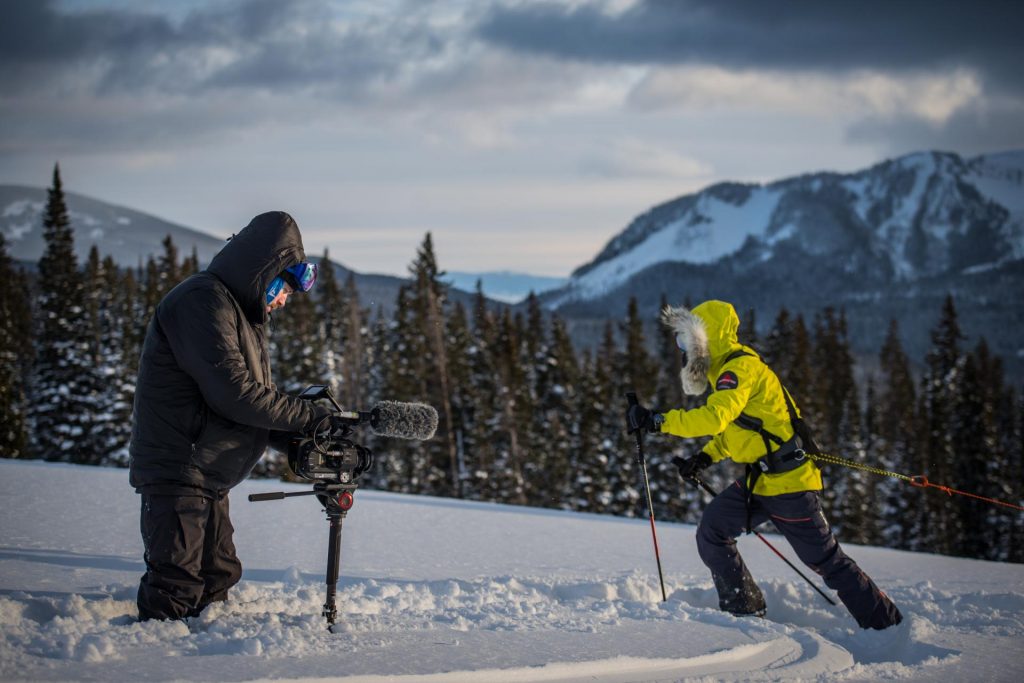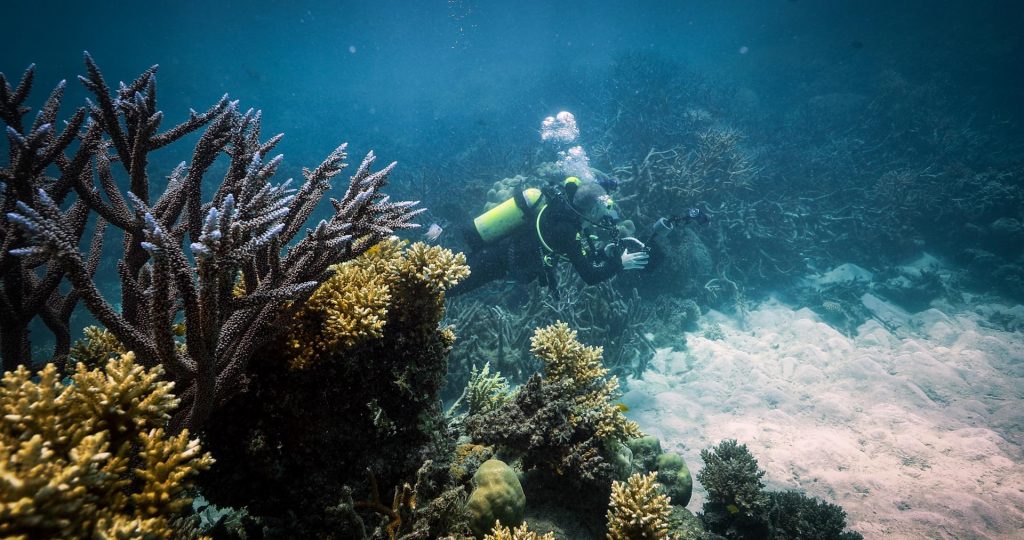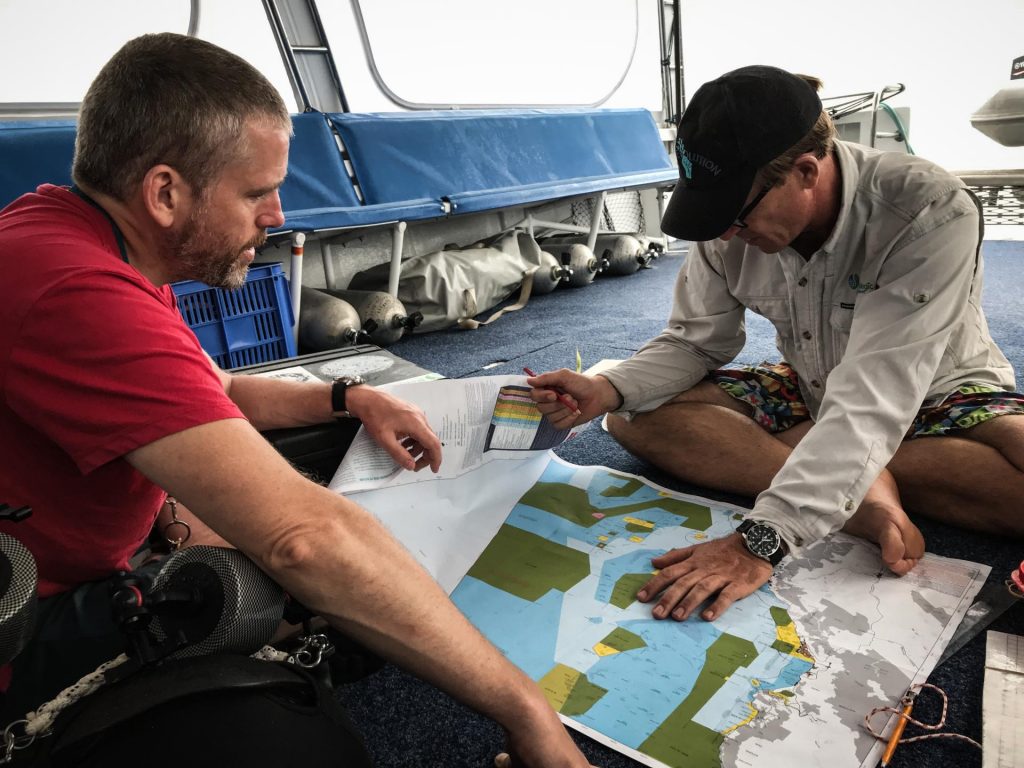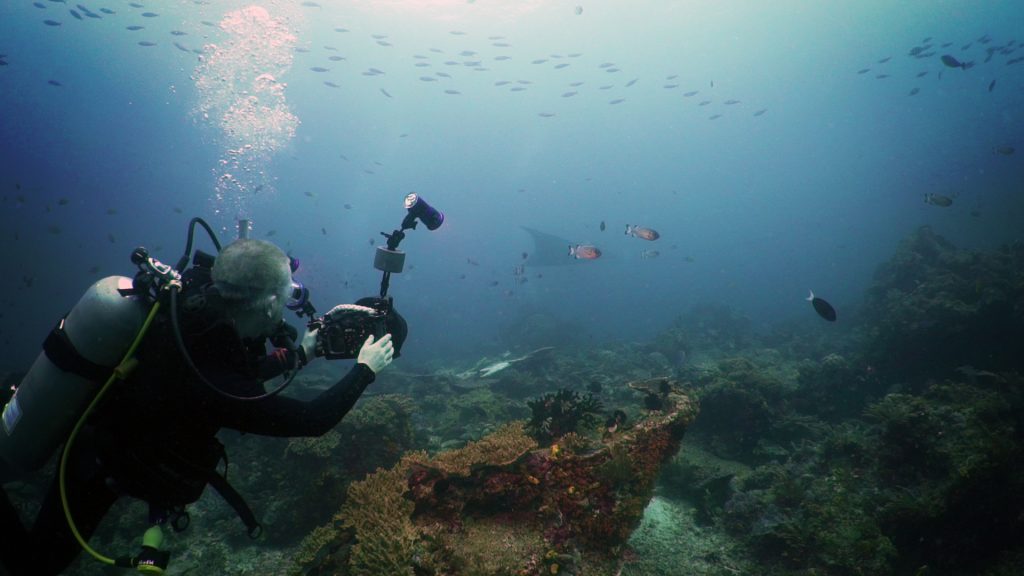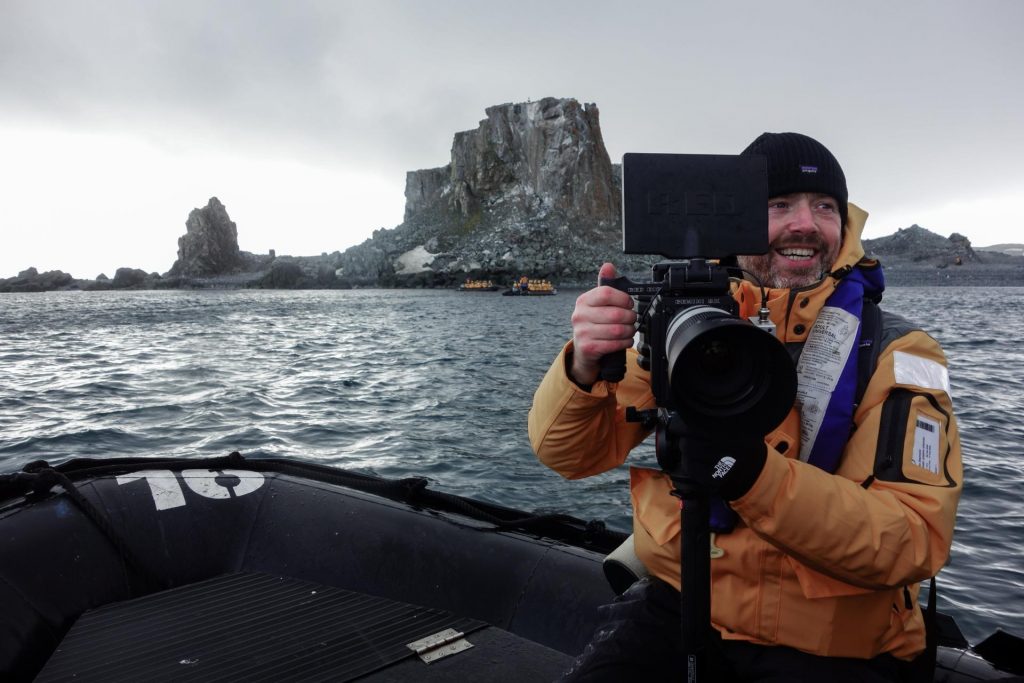In 2012, social activist, Rick Grehan started imageMILL in Tokyo—Japan’s first creative agency focused on sustainable and ethical creative solutions. In a world filled with mass consumerism and advertising, Rick wanted to use his passion for creative storytelling and the outdoors to make a difference.
Since then, his projects have taken him everywhere: from working with the local branch of Protect Our Winters in Hakuba, Nagano, to the far reaches of Antarctica following polar explorers. In 2017, Outdoor Japan featured Zan, an imageMILL documentary on endangered dugongs in Henoko Bay, Okinawa. Recently, we revisited Rick to talk about sustainable living in an age when we need it most.
Rie Miyoshi: Could you tell me a bit about why you decided to start imageMILL—were you always interested in social activism?
Rick Grehan: It’s a long story. I grew up in Belfast, Northern Ireland during a politically tough time. It was basically a war zone. My family was actively involved in the peace movement. My father was one of the leaders of the civil rights movement there and my aunt’s sister won a Nobel Peace Prize, so I had some great role models inspiring me. I grew up holding placards before I could read them, fighting for peace and justice. We were taught not to trust the media at face value and always question the intentions and meaning behind everything from advertising to government policies, and of course, brands.
This led me into social issues and environmentally friendly, alternative living. As I became a graphic designer, I had a bit of an identity crisis as I found myself working in an industry that lacked moral direction and focused on profits. I used to introduce myself like “Hello, I’m Richard, I convince people to buy stuff they don’t need.” Sometimes I was helping big brands sell their products that in real life I actually boycotted. I couldn’t see a way out so I eventually gave it up and traveled the world, thinking how I could change my work to amount to something more meaningful.
I ended up in India studying yoga and meditation, and realized that it’s all about intention. Advertising and branding play on human behavior, and big businesses were taking advantage of this to get people to keep buying. So I thought, ‘What if we just shifted the focus to good intentions?’ This was just before mainstream sustainable branding started, so I got back into advertising and tried to make a difference. I started taking more corporate social responsibility projects but realized quickly that it wasn’t enough as these projects were not long term solutions to any of the issues they tried to address. Most of the CSR projects only helped improve short-term brand image, or even worse, encouraged greenwashing. But I knew companies can actually make profit while doing good, but it needs to be a core value to the business.
Today at imageMILL, we aim to bring meaning to brands, find their purpose and then communicate those values in engaging and authentic stories by using the power of film and design. We deeply care about the environment and the impact our clients have on it.
RM: Why did you move to Japan?
RG: (laughs) I was Japanese in my previous life, I’m sure of it! From an early age I was drawn to Japanese culture and practiced karate for over 25 years. I was growing bonsai in my Belfast backyard when I was a teenager, copying ukiyo-e masters in my art class in high school and was obsessed with Japan’s traditions rather than manga. When I managed to find a job as a creative director at a design company in Tokyo, I jumped at the opportunity.
RM: It takes a lot to be as committed to ethical practices as you are! Have you found it tempting to take on other projects that are not related to sustainable purposes?
RG: This is one of my biggest dilemmas. The first rule of sustainable branding is to be profitable as a company. You can have the best, most ethical product or service in the world, but if you can’t sell it you will disappear. I started imageMILL with a view to being the first truly ethical and sustainable agency in Japan. I had strict policies and high ideas of only working with truly ethical brands, but Japan is a bit behind the curve. After six months I realized my savings were rapidly disappearing and I had to relax my policies, so I developed a 50/50 rule with 50% being those ethical brands and organizations, and the other 50%, bigger, more established brands who were not overtly unethical and wanting to make some real change from within. As the local industry is catching up and moving towards sustainability, I am working on changing this ratio. It took some time but finally, we seem well placed to grow.
RM: This past winter you filmed with Protect Our Winters Japan. Unfortunately we had a record-low snowfall this season. Could you share your thoughts on working on this project?
RG: Protect Our Winters is a great organization and their work is vital! Snowboarders are at the frontline of climate change and experience firsthand the impact of climate change. Professional snowboarder and climate activist Goro Komatsu is a legend on so many levels and it was such a pleasure to work with him on this documentary in Hakuba. The documentary is part of a climate change series by Patagonia. This is one of the best parts of my job getting to meet outstanding people and finding out what inspires and motivates them. Goro-san told me about his inspiration from the native american culture when he lived in Canada and shared his story of reconnecting with nature through that, his deep love for snow and snowboarding culture was inspiring to say the least.
We all think climate change is something happening in a distant land like the North Pole or the Great Barrier Reef, but it’s hitting us right at home in Japan. This past winter season, I was shocked to hear from the POW guys about the quality of snow dropping and ski lodges closing because there wasn’t enough snow to keep them in business. While this was shocking and eye opening, at the same time I was encouraged to see these guys working hard to make a difference.
RM: What’s the most rewarding part of what you do?
RG: There is so much I love—and secretly hate—about my work. To be able to get out into these incredible outdoor spots of the world and record what’s happening is a blessing. I get to access places most people usually don’t go to. To name a few, I’ve been filming marine biologists tagging massive manta rays deep in the Raja Amput seas, exploring Antarctica with polar explorers and diving with coral conservationists in the Great Barrier Reef. I love sharing these experiences with people through film, and establishing a connection that makes people want to protect these wonders. The first screenings of the films we worked so long and hard on are special as well.
RM: What are some ways you apply sustainable living to your everyday life?
RG: I lived in the mountains of Fujino, Kanagawa for over two years, but have recently returned to Tokyo as the commute was too much and my business is at a stage where I need to be very hands on. Hopefully this is a temporary situation for a few years so I can escape back to the mountains again. In the meantime, I’ve set up a balcony, raised vegetable bed and waiting for my seedlings to mature. An old wheel bin has been converted into a composter and trying hard to go zero waste. We will be installing solar panels shortly and applied to switch our energy supplier to renewable sources. I’ve also switched my personal bank to sony as they did well in the 350.org cool bank awards. I think divestment is the single best power we have as individuals, to combat these macro social and environmental issues. It’s a challenge in Japan but making the effort is rewarding and we need to congratulate ourselves for even trying to go towards the right direction.
I always have a three-point system for change on a personal level. First, buy ethically. This extends beyond just the products you actually buy, but also how your money is invested and finding out which banks are the most ethical. Second, volunteer your time for a good cause. Finally, find yourself. This could be through meditation, yoga or simply getting into nature. In modern society we are losing connection with our true selves so we need to pull back and have some quiet time.
RM: With the pandemic going on, what are your thoughts on self-sustainability and how Japan needs to adapt?
RG: This is an opportunity to reset our society, hopefully get people to wake up and learn hands-on skills like growing their own food, repairing clothes or baking bread. Personally it’s been a chance for me to get projects moving forward and I see through people’s social media feeds that they are learning to reconnect with themselves and their families. We as a race have joined together like perhaps never before, and stood up to this challenge together. Countries have had ceasefires.
In Japan, I see work-from-home policies finally being implemented. I see this as a time to address difficult work environments while allowing people to reconnect with their loved ones and families. On a more macro scale, it shows how things such as renewable energy can move us away from reliance on imported fossil fuels and help us become cleaner and more efficient. Will the pandemic change the way we spend or invest? I hope so: one thing I am sure of is we can’t go back to business as usual.
There are still many decisions to be made in Japan for big businesses to become more sustainable as there is a heavy reliance on old business models and previous investments. However, in my opinion it’s looking promising and I think Japan could leapfrog over the rest of the world to become one of the most sustainable and ethical countries in the world.
RM: What would you tell people who don’t think their small actions would make a difference?
RG: “One little straw can’t make any difference.” This was thought around 100 billion times last year and is a cliché example of what the cumulative effect of everyone taking action can do. Businesses and brands know the vital importance of individual choices, so they spend billions of dollars on advertising to influence those small actions to create multibillion-dollar industries. We need to start realizing that the power of the consumer is extremely important. We can move the world in a different direction by simply changing how we spend our money or our time. We can’t change others, but we can change ourselves and that is a revolutionary act. It’s also quite a difficult act to question everything you’ve grown up believing in and see if there is harm being caused by that activity or that purchase.
Individual action is very powerful but at the same time we need to work towards a macro-societal change too. We can do that by voting for the right people. I started on a quote so I’ll end with one claimed to be from the Dalai Lama: “If you think you are too small to make a difference, try sleeping with a mosquito.”
RM: What are you currently working on?
RG: I’m working on some wonderful projects such as a series of mini-documentaries on “eco-heroes” for Citizen Promaster watches. We are creating a platform to highlight real heroes: the people behind the scenes working tirelessly to protect nature. We’re also working on rebranding Citizen L, their ethical watch collection. It’s their first product range that analyzes their environmental impact on various levels of production and materials. Additionally, we’ve been creating documentary films for 350.org on climate change.
Reconnection and regeneration are my themes these days. We are so busy and distracted that we’ve lost connection on so many levels: with our families, nature and ourselves. I hope my work can open up a dialogue to get people thinking again about what is really important in life. I’m very pleased to see that sustainability is really starting to go mainstream business wise, but we need to move beyond simply having zero impact and move to more organic models of coexistence whereby we have a net positive impact on our environment and society.
To read our feature on Zan: Japan’s Last Dugongs, click here.




